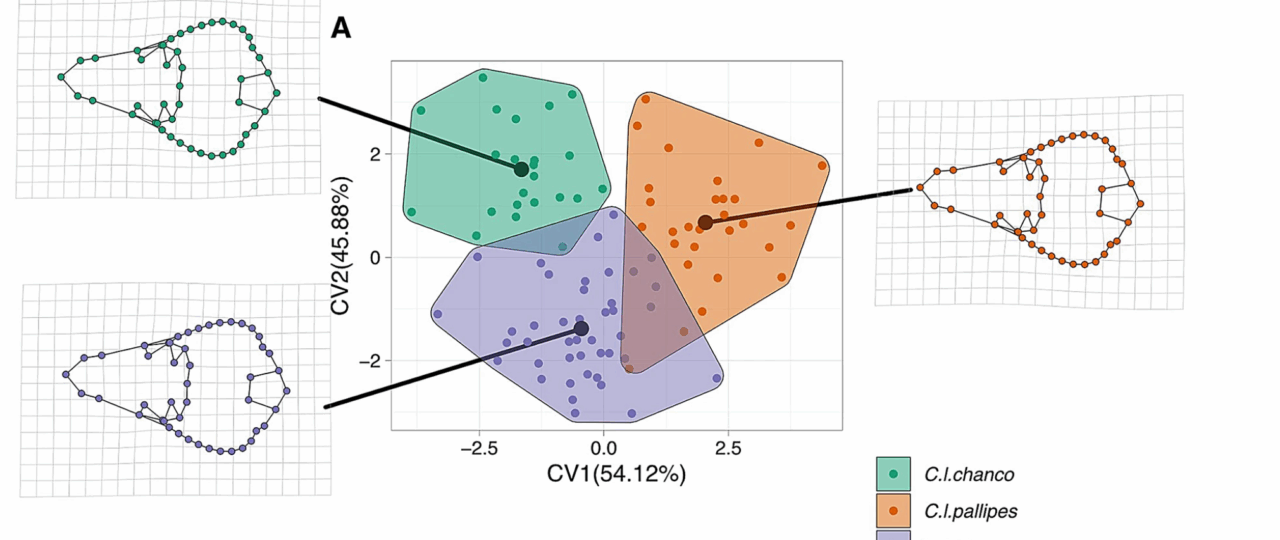New Paper out: Morphometric evidence for the differentiation of the Himalayan wolf Canis lupus chanco (Canidae; Carnivora)
Although it looks somewhat like the familiar grey wolf, the Himalayan wolf belongs to one of the oldest wolf lineages of wolves around the globe. New genetic studies have shown that it’s quite different. But does that difference show in the animal’s physical appearance? That’s what researchers set out to discover in a recent study using skulls from museum collections around the world.
By analyzing the shape and size of these skulls using both traditional measuring techniques and modern computer-based methods (called geometric morphometrics), the team compared Himalayan wolves to other wolf populations across Eurasia.
The results? While simple measurements didn’t reveal clear-cut differences, more detailed geometric shape analysis showed that Himalayan wolves tend to have shorter snouts and wider cheekbones compared to other wolves. These features might be adaptations to the tough and cold mountainous environment and/or the types of prey found up there.
Based on the limited dataset available to the study, the differences were subtle and more in-depth studies are recommended. However, we go to keep in mind that canids overall tend to look very similar, and many of the differences between species are mainly due to differences in size, not shape, so expected differences will always be subtle.
Find the full paper here and abstract below.
Abstract
The taxonomy of wolves (Canis sp. complex) is under increasing scrutiny due to molecular evidence revealing the existence of multiple cryptic lineages. Among these, the Himalayan wolf (Canis cf. lupus chanco), native to the Tibetan Plateau and the Himalayas, represents one of the most ancient lineages in Eurasia. Its morphological distinction from grey wolf populations remains poorly understood. In this study, we evaluated the morphological differentiation of the Himalayan wolf by analyzing specimens from museum collections using linear and 2D geometric morphometrics. Our comparative analysis included skulls from various wolf populations across Eurasia, grouped according to known genetic lineages. Although linear measurements failed to reveal clear diagnostic features, geometric morphometric analysis indicated that Himalayan wolves possess a shorter muzzle and wider zygomatic arch than other populations. These traits may reflect adaptations to their environment and prey preferences. However, the overlap with other wolf populations was significant, and cross-validation analyses showed low reclassification rates, indicative of morphological conservatism within Canidae. Moreover, several museum specimens previously labeled as Himalayan wolves were misidentified, complicating the taxonomic assessment. Our findings provide support for the subtle morphological distinctiveness of the Himalayan wolf, though further integrative studies incorporating genomic and 3D modeling approaches are required to clarify the taxonomic status of this group.
